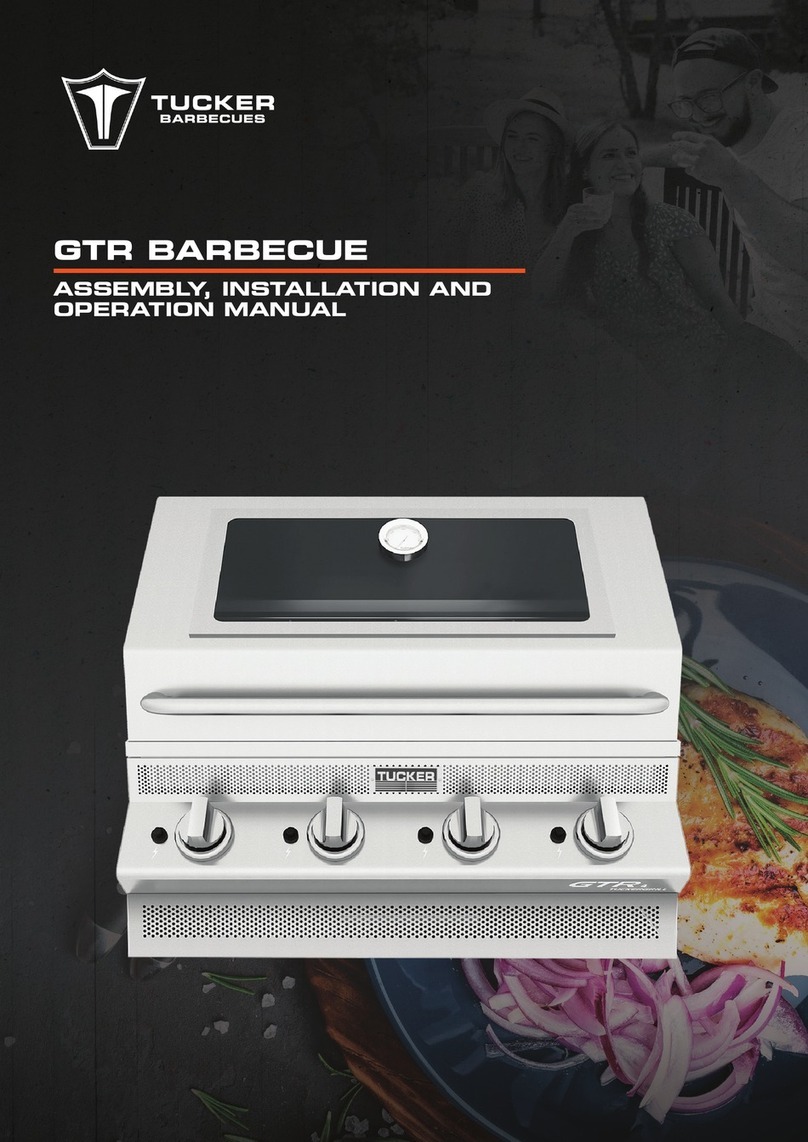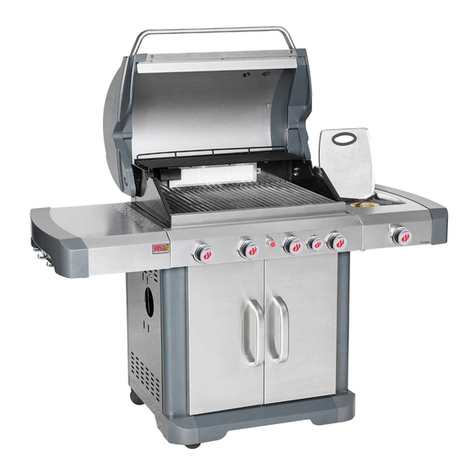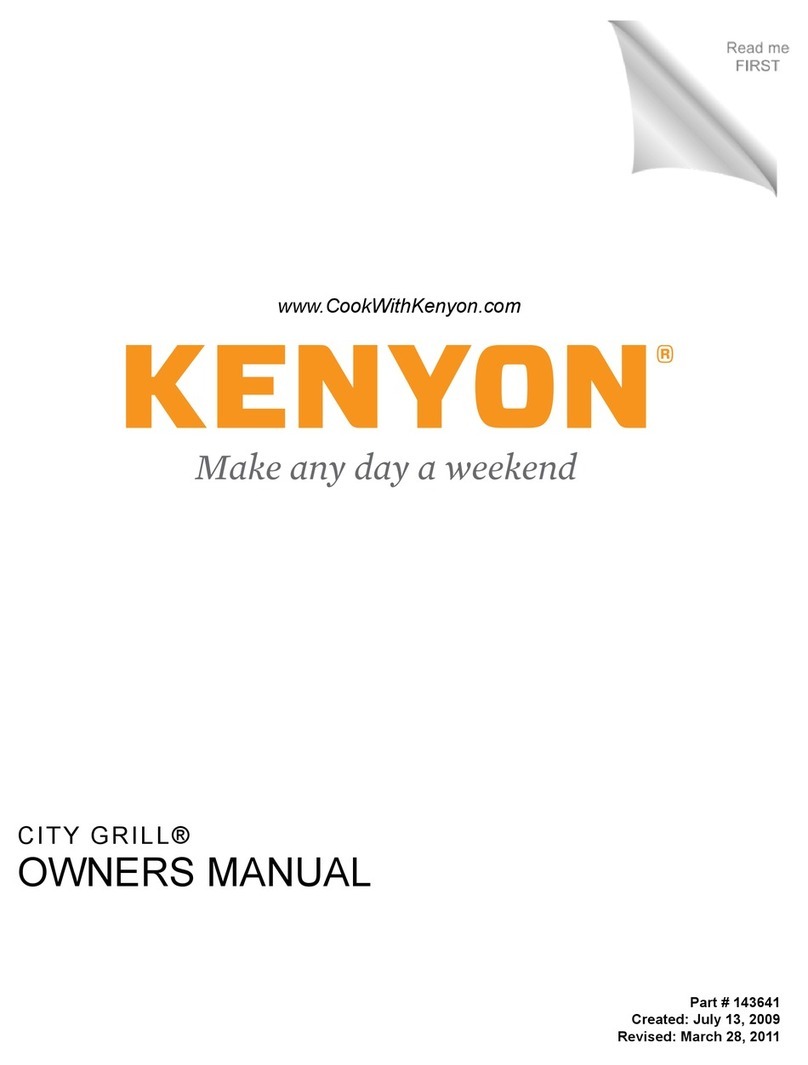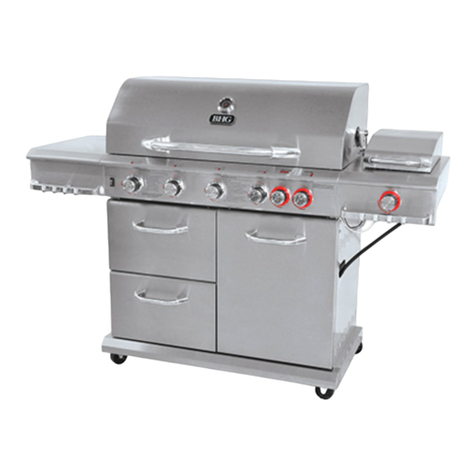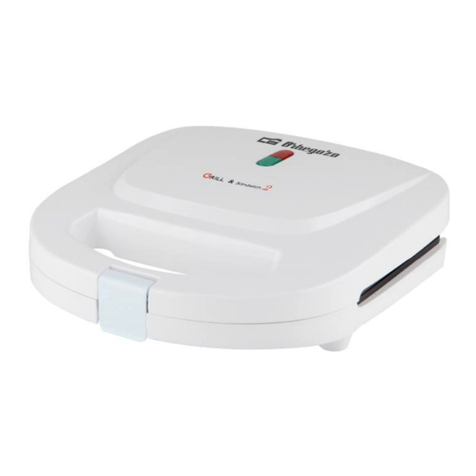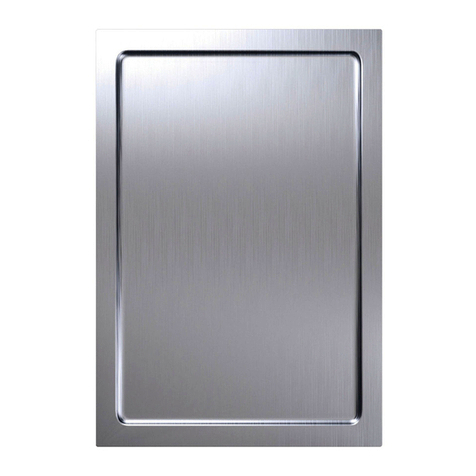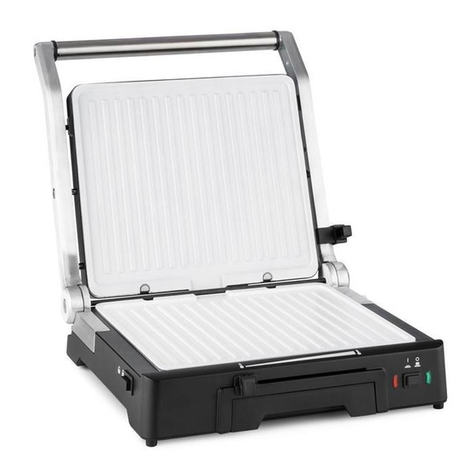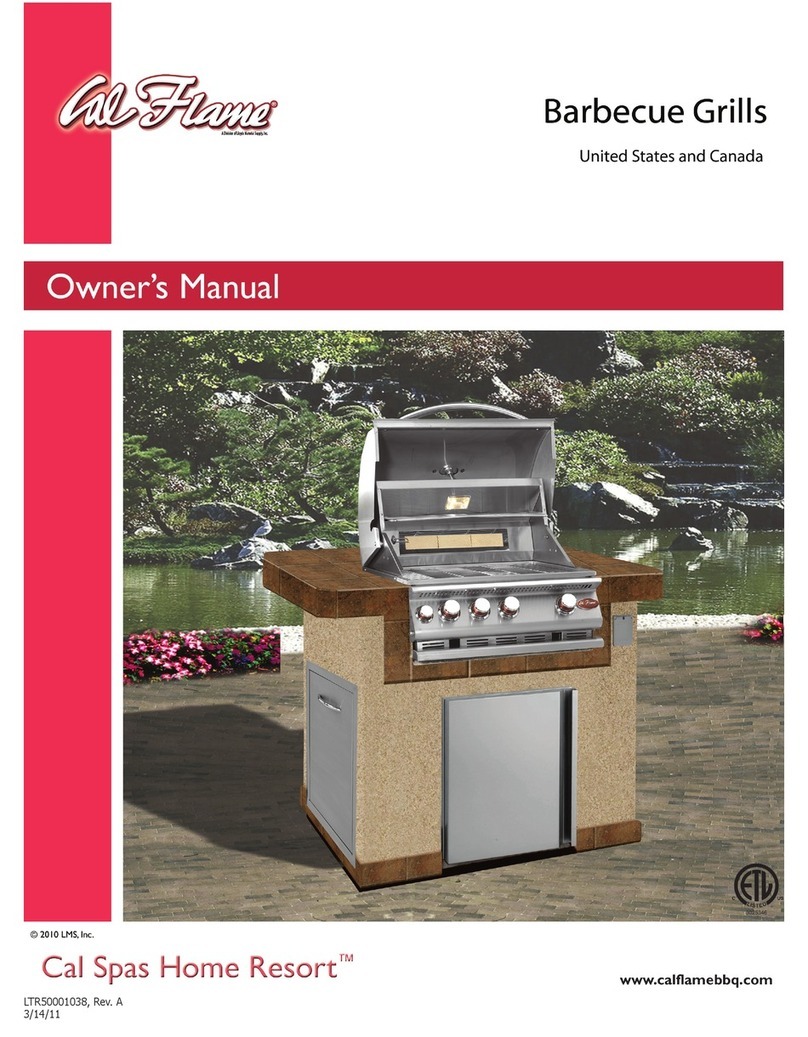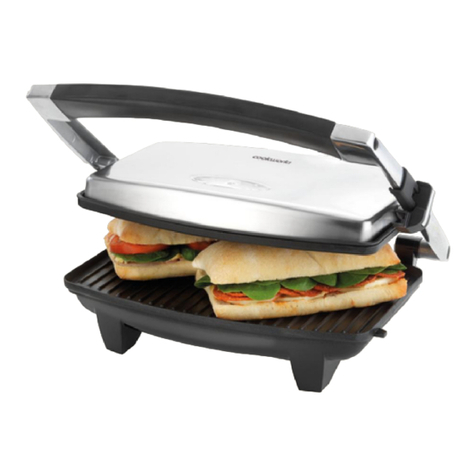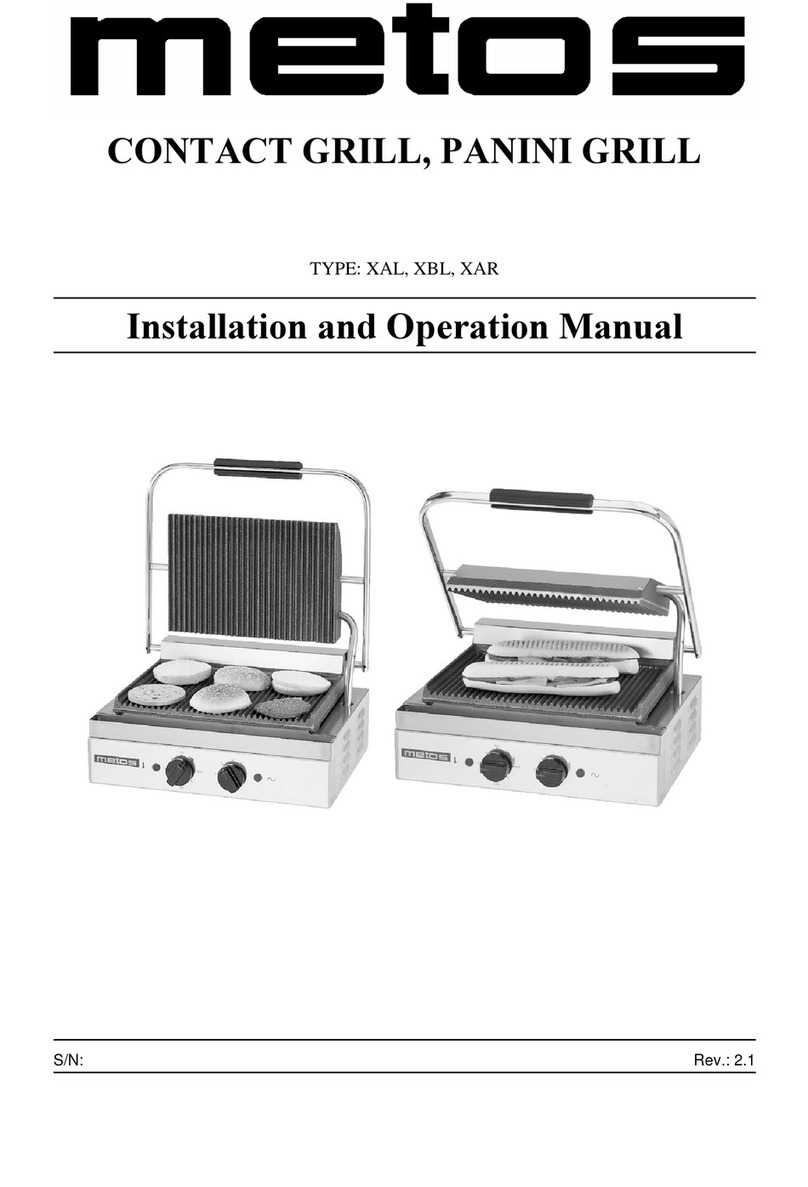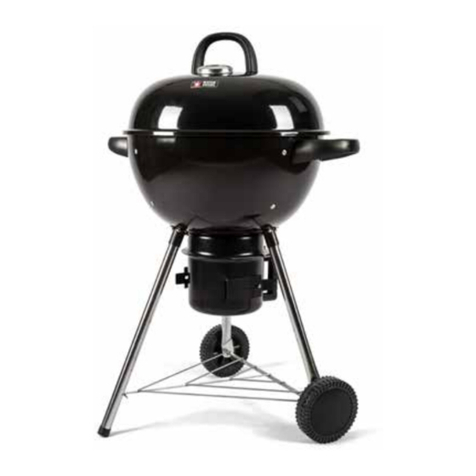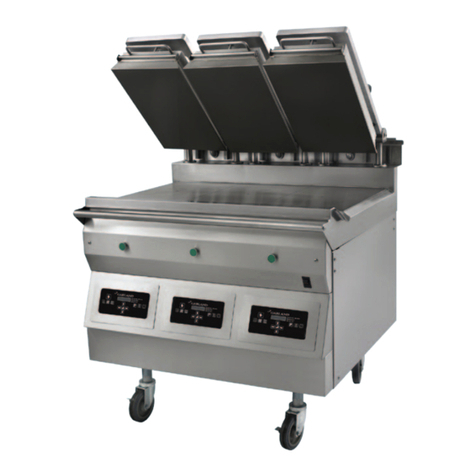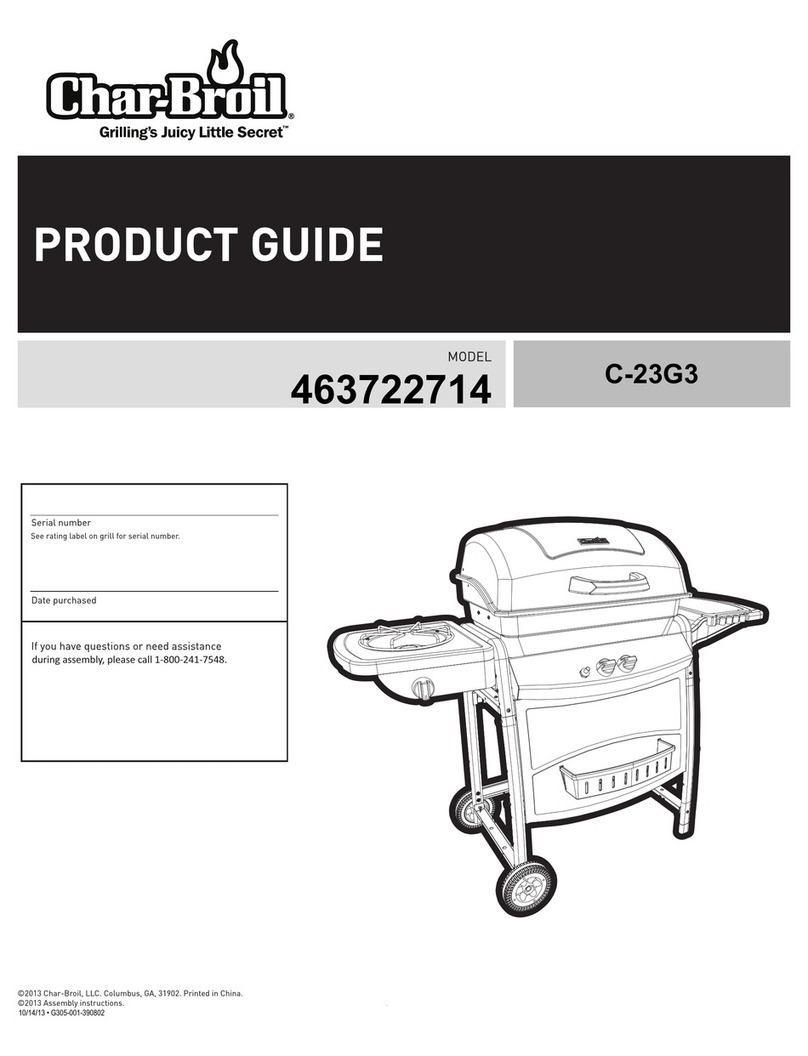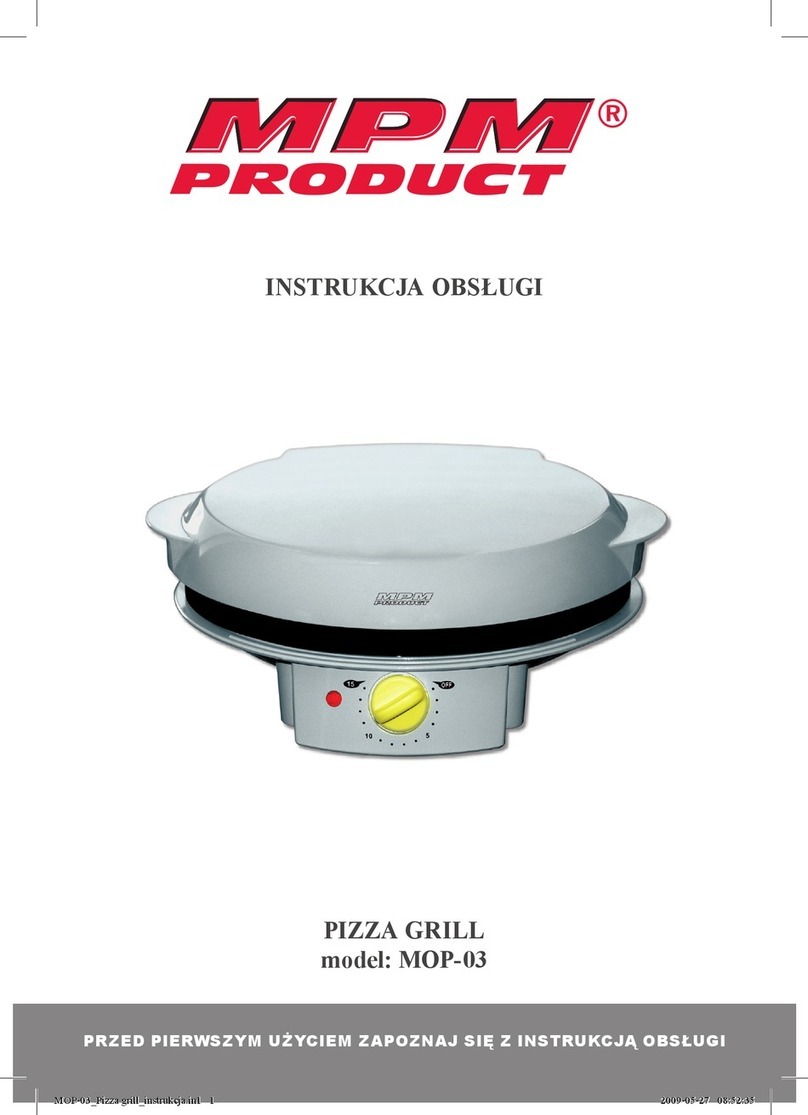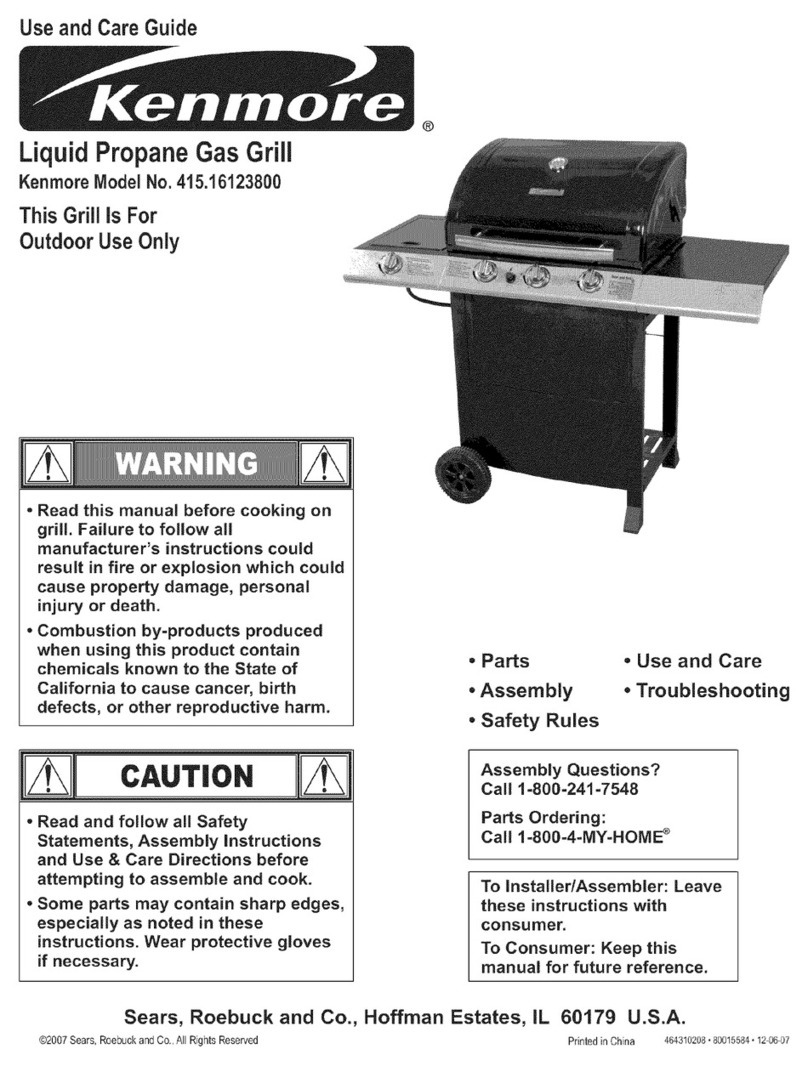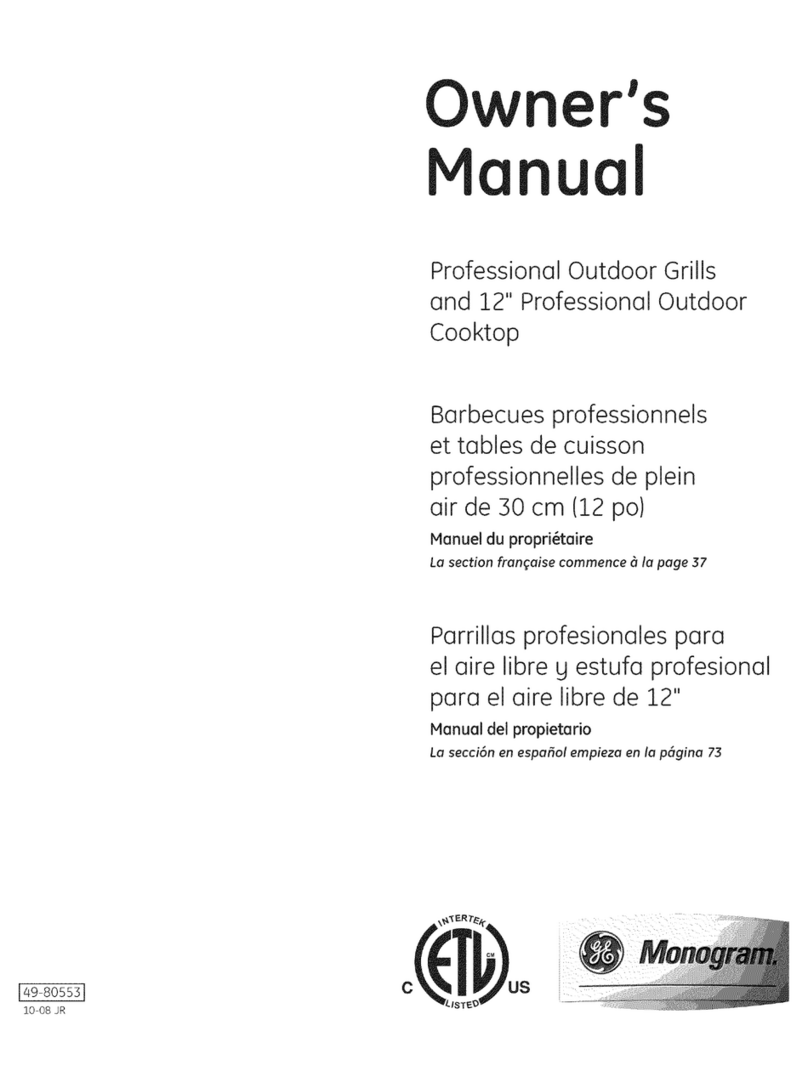
6
INSTALLATION INSTRUCTIONS
INSTALLATION INSTRUCTIONS
READ THE IMPORTANT INFORMATION ON THE
RATING PLATE ON THE FRONT OF THE BARBECUE.
TUCKER GT BARBECUES ARE MADE AND APPROVED
TO AUSTRALIAN STANDARDS A.G.A. APPROVAL NO.
AGA 4136
The GT series barbecues are designed and
approved for outdoor use only.
To install the barbecue onto a GT trolley, read the
relevant manuals and instructions.
If a roasting hood is to be installed onto the
barbecue face the front of the BBQ into the
prevailing wind.
For LP Gas connections, an approved 2.75 kPa
regulator and hose assembly connection to the
appliance is tted by the manufacturer.
The appliance inlet is 3/8 S.A.E. male and is located
at the base of the barbecue on the front right hand
side, approximately 100mm in depth from the front
of the cooking grill and 60mm in from the front right
hand side, at the base of the barbecue.
The minimum capacity propane cylinder for this
barbecue is 4kg.
This barbecue is intended to be installed into a
Tucker GT Cabinet Trolley. Alternatively, it may be set
into brickwork. Regardless, be sensible about where
you locate the barbecue.
The barbecue must be located on rm and level
ground.
Do not locate the barbecue below or around
combustible materials or surfaces such as
overhanging trees, bushes or ammable liquids.
Do not obstruct any of the air ventilation openings at
the front of the barbecue.
Do not use this appliance indoors or on marine craft.
This appliance shall only be used in an above
ground, open-air situation with natural ventilation,
without stagnant areas where gas leakage and
products of combustion are rapidly dispersed by
wind and natural convection.
Strong winds blowing into the back or across
the back of the Roasting Hood while you are
cooking with the hood closed can cause the
barbecue to overheat. The Roasting Hood
vents at the rear top of the Roasting Hood.
Hot air inside the hood is released through this
vent when the hood is shut.
Hot air retained in the hood during cooking
may not be able to be released naturally
through the rear vent of the hood if a strong
wind is blowing into the back of the vent.
In freezing conditions, the pressure of propane
gas can decrease in the cylinder tank,
causing a lack of gas pressure which may
affect the way the barbecue operates.
Any enclosure in which the appliance is used shall
comply with one of the following:
• An enclosure with walls on all sided, but at least
one permanent opening at ground level and no
overhead cover (gure 1)
• Within a partial enclosure that includes an
overhead enclosure and no more than two walls
(gure 2)
• Within a partial enclosure that includes an
overhead cover and more than two walls, the
following shall apply (gures 3, 4 and 5):
(a.) At least 25% of the total wall area is
completely open
(b.) At least 30% of the remaining wall area is
open and unrestricted
• In the case of balconies, at least 20% of the total
of the side, back and front wall areas shall be
and remain open and unrestricted.
If your installation space differs, contact your
nearest dealer.

